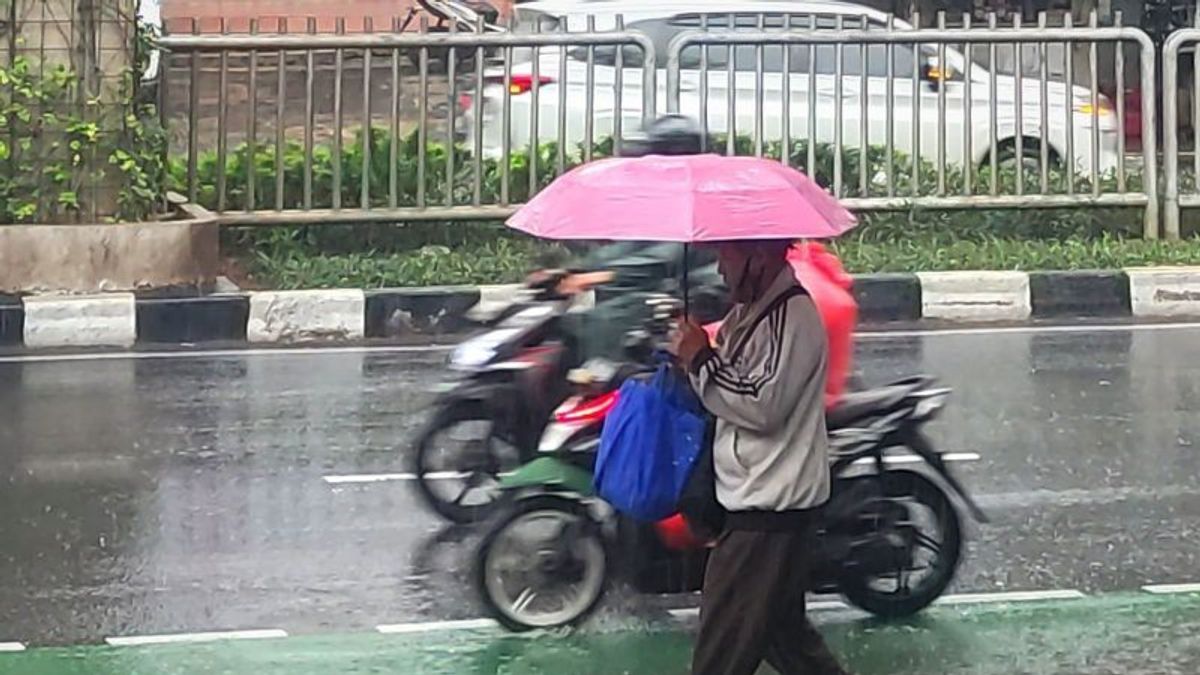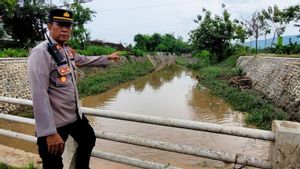JAKARTA - Most areas in Indonesia have the potential to experience extreme weather in the form of heavy rain accompanied by lightning and strong winds, even three of which are set to be on standby by the Meteorology, Climatology and Geophysics Agency (BMKG).
Quoted from ANTARA, on the official website of the BMKG, Wednesday, June 5, the 14 areas with alert status include; South Kalimantan, South Sulawesi and Southeast Sulawesi.
BMKG weather analysis is known to South Kalimantan to have the potential for heavy rain in the afternoons; Kotabaru Regency, Tanah Bumbu and Tanah Laut.
Heavy rain accompanied by lightning and strong winds of short duration at night in the areas of Banjarmasin, Banjarbaru, Banjar, Barito Kuala, Tapin, Hulu Sungai Selatan, Hulu Sungai Tengah, Hulu Sungai Utara, Balangan, Tabalong, Kotabaru, Tanah Bumbu, and Tanah Laut.
South Sulawesi, the majority have the potential for light-medium rain in the morning at 20-33 Celsius and humidity at 65-95 percent.
Then, for Southeast Sulawesi, there is the potential for moderate to heavy rain which can be accompanied by thunder and strong winds in the morning in the North Konawe, South Konawe, Konawe Islands, East Kolaka, Kolaka and North Kolaka areas.
Early warning is also predicted to hit South Sumatra, Lampung, Bangka Belitung, West Java, Maluku and six provinces in Papua.
Meanwhile, for the DKI Jakarta area, it is mostly sunny and cloudy in the morning until early morning, with humidity 60-100 percent at night, and a temperature of 23-33 degrees Celsius.
BMKG Deputy for Meteorology Guswanto said his team found the potential for rain in a number of parts of Indonesia was still high, at least until September even though it had also begun to enter the dry season.
This is the case with the presence of several atmospheric dynamics that are still active in the territory of Indonesia; the Madden Julian Oscillation (MJO) phenomenon, Rossby, Kelvin equatorial waves, to cyclonic circulation patterns and the potential for the formation of bend areas and wind slowdown.
SEE ALSO:
According to him, this condition could have an impact on extreme hydrometeorological weather which includes floods, flash floods, rain lava floods, landslides and so on, although at the same time Indonesia began to be hit by the dry season (June-September 2024).
Thus, BMKG asks the public to always update information through the official infoBMKG channel and avoid hoax news that cannot be accounted for.
The English, Chinese, Japanese, Arabic, and French versions are automatically generated by the AI. So there may still be inaccuracies in translating, please always see Indonesian as our main language. (system supported by DigitalSiber.id)












